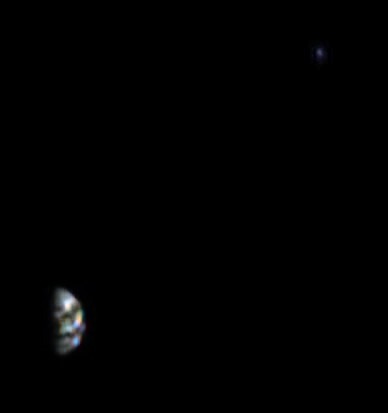In September 2022, NASA’s DART mission did something that seemed only possible in science fiction or mythology: It moved a celestial body. Asteroid Dimorphos, the moon of the much larger asteroid Didymos, was hit with such strength by the spacecraft that it altered its orbit. Now it’s the turn of Hera, a follow-up mission by the European Space Agency, launched just last week.
DART demonstrated that we can protect ourselves from dangerous asteroids. The impact created a change in the orbit bigger than expected (and hoped), threw boulders far and wide, and it might have created the first human-made meteor shower on both Earth and Mars. But there are many uncertainties about what happened to Dimorphos and that’s why Hera is needed.
For sure, we know that Dimorphos is still there… but [what] it looks like… only Hera can tell!
Paolo Martino
“Hera is going to perform a full characterization of Dimorphos that, validating and calibrating the scientists’ models, will allow us to fully understand the effectiveness of the DART’s impact technique, up to which extent we’ll be able to use it in the future and to deflect which asteroids,” Paolo Martino, Deputy Project Manager of the mission, told IFLScience.
Not all asteroids are the same. Some are stoney, some are metallic, and some are just rubble piles. It is paramount to understand the complete effect of DART if we are to understand how to best use a kinetic impactor to deflect a space rock in the future.
“This is also linked to one of the biggest question marks which is ‘How does Dimorphos look like now?’” Martino told IFLScience. “[It] could have a small crater. Could have a huge crater. Might be completely reshaped. Might even have shattered into pieces that slowly came back into a conglomerate. For sure, we know that Dimorphos is still there (from ground light-curve observation), but [what] it looks like… only Hera can tell!”

The Thermal Infrared Imager supplied by the Japanese Space Agency (JAXA) will provide insights into the temperature and physical characteristics of the asteroids.
Image Credit: ESA/JAXA
Hera will study the two-body system and it is prepared to do that important job. Testing the instrument was done just days after launch since it was pretty close to the most familiar two-body system we have: the Earth and the Moon. The suite collected data and multiple cameras snapped images of the Earth and the Moon from more than 1 million kilometers (610,000 miles) away.
“The first days after launch have already been dense [with] emotion for the teams, with the first pictures taken from the various instruments and the first successful tests of the autonomous navigation algorithms. The latter has been developed to navigate safely around two bodies moving around each other, and some first in-orbit tests have already been performed, making use of the Earth-Moon system while departing towards deep space,” Martino continued.
It is an incredible achievement that this mission was implemented in just four years. Most deep space missions take way longer to go from an idea to the launch pad. Instead, Hera launched within one day of its original planned date, thanks to the huge efforts of the European Space Agency as well as more than 70 companies from 19 countries.
“The concept involving an Impactor and an Observer spacecraft, however, has actually been formulated more than 20 years ago by the late Prof. Andrea Milani from the University of Pisa, after whom one of the two CubeSats is named. The other CubeSat is named Juventas after one of the mythological children of Hera,” Martino explained, before adding a funny caveat. “Despite some frequent questions, there is actually no reference to the Italian football teams Juventus FC and AC Milan.”

Hera’s HyperScout H instrument can see beyond the human eye and will allow scientists to determine the asteroids’ mineral makeup.
Image Credit: ESA
DART carried a CubeSat, LICIACube, from the Italian Space Agency, which provided the first fleeting glimpse of the collision aftermath. Very important data that will be expanded by the arrival of Hera to the double asteroid.
“In the next months, the major milestone will be a fly-by of Mars in March 2025, when Hera will calibrate its instruments, making use of the Red Planet, and will take the chance to take a look at Deimos (one of Mars’ moons) thanks to a specifically designed fly-by trajectory,” Martino told IFLScience. “Then, of course, the braking maneuvers at the end of 2026 to rendezvous with Didymos and… the first pictures to know [what] Dimorphos looks like!”
Source Link: Mission To Deflected Asteroid Snaps Earth-Moon Photos In First Crucial Tests